I am writing today laying on the couch both a little bit sick and with a sore knee (best to double up these things up to save on recovery time right?). This does present me with an opportunity to write about my budget running timing gate project.
At large running, cycling and probably countless other events, participants are usually given a bib containing their name / race number. Inside this bib is a little UHF chip/tag which transmits as it crosses a gate such as the start or finish line. The gates themselves are usually a mat that contain the antenna within. Many races usually contain multiple gates and recently have provided websites to monitor the progress of participants throughout the event.
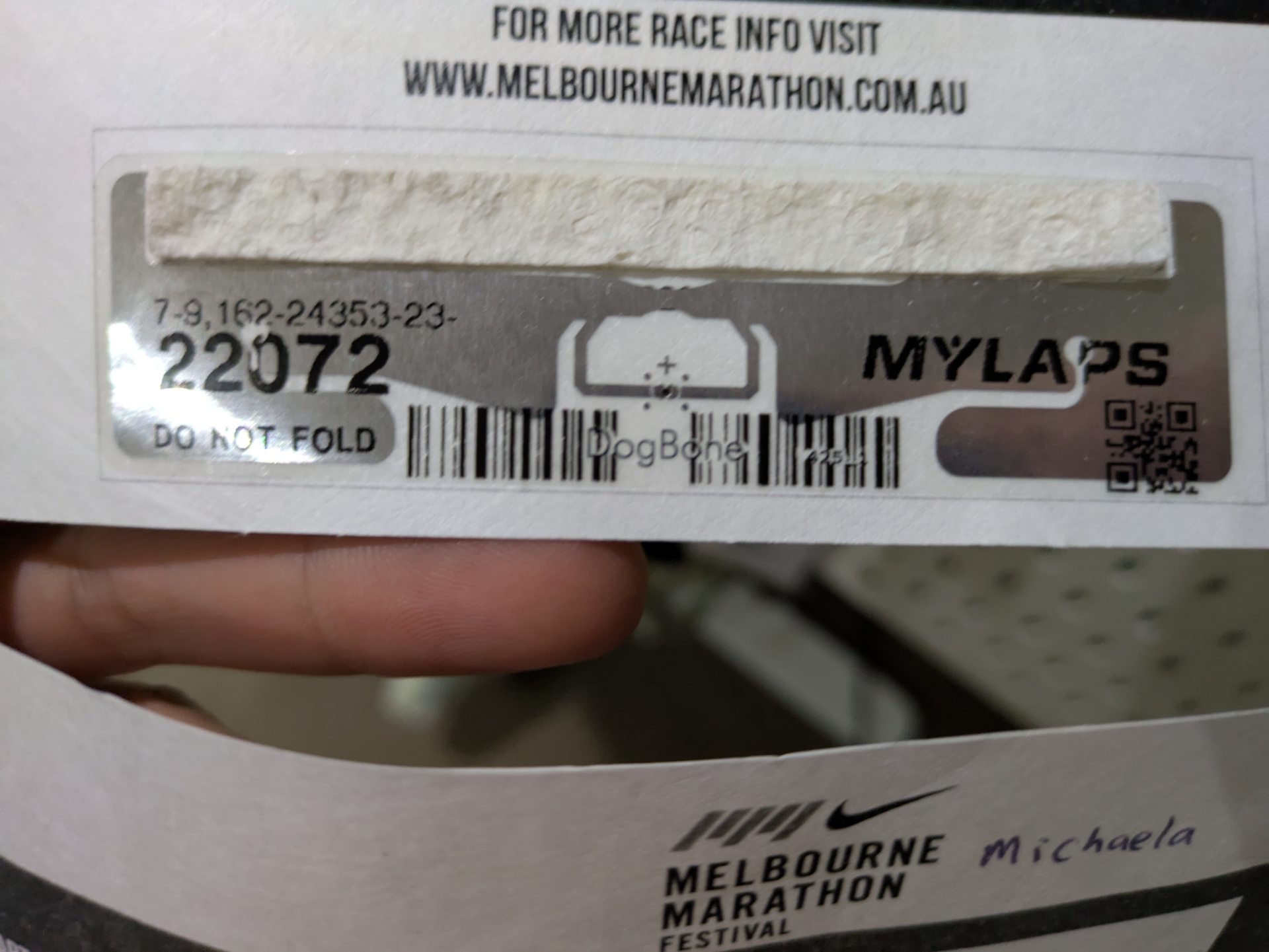
Prior to messing up my knee, then falling off my bike… again, I regularly took part in a run club near me. The run involves following the river then a short city section back to the start, totalling about 7.5km. It’s a really lovely run with a small group of people. At one point we joked about people cutting one of the corners and that they would be penalised. It got me thinking - could we build a low budget gate system for fun. Even +/- 10 seconds is going to be fine for this.
So when we think about these gates there are three main components, the gate, the tag, and the server/site. I wanted this to be super low budget so for the tag I decided to pick something that we all already had - smart watches. In this case specifically Garmin, however I think this approach could work for others as well. The idea here is to set up the watch to broadcast heart rate over bluetooth. The gate would monitor bluetooth signal strength and record a crossing when the bluetooth signal is strongest.

For the gate, the constraints are even harder. It needs to be installed in public space, ideally without asking for permission, not getting in the way (eg no mat), be left unattended (so not expensive if stolen/lost), have some form of live communication. My first idea here was cheap smart phones. However I had concerns about them being stolen and the cost of mobile plans. My next thought was using LoRa WAN devices. Originally I went with a LILYGO TTGO but switched to a T-Beam.
The T-Beam gives me a GPS (good for time!), WiFi/Bluetooth, LoRa transmitter, 18650 battery, and a little display for diagnostics. These are used a lot with Meshtastic folk so there’s also lots of 3d printed case designs as well.
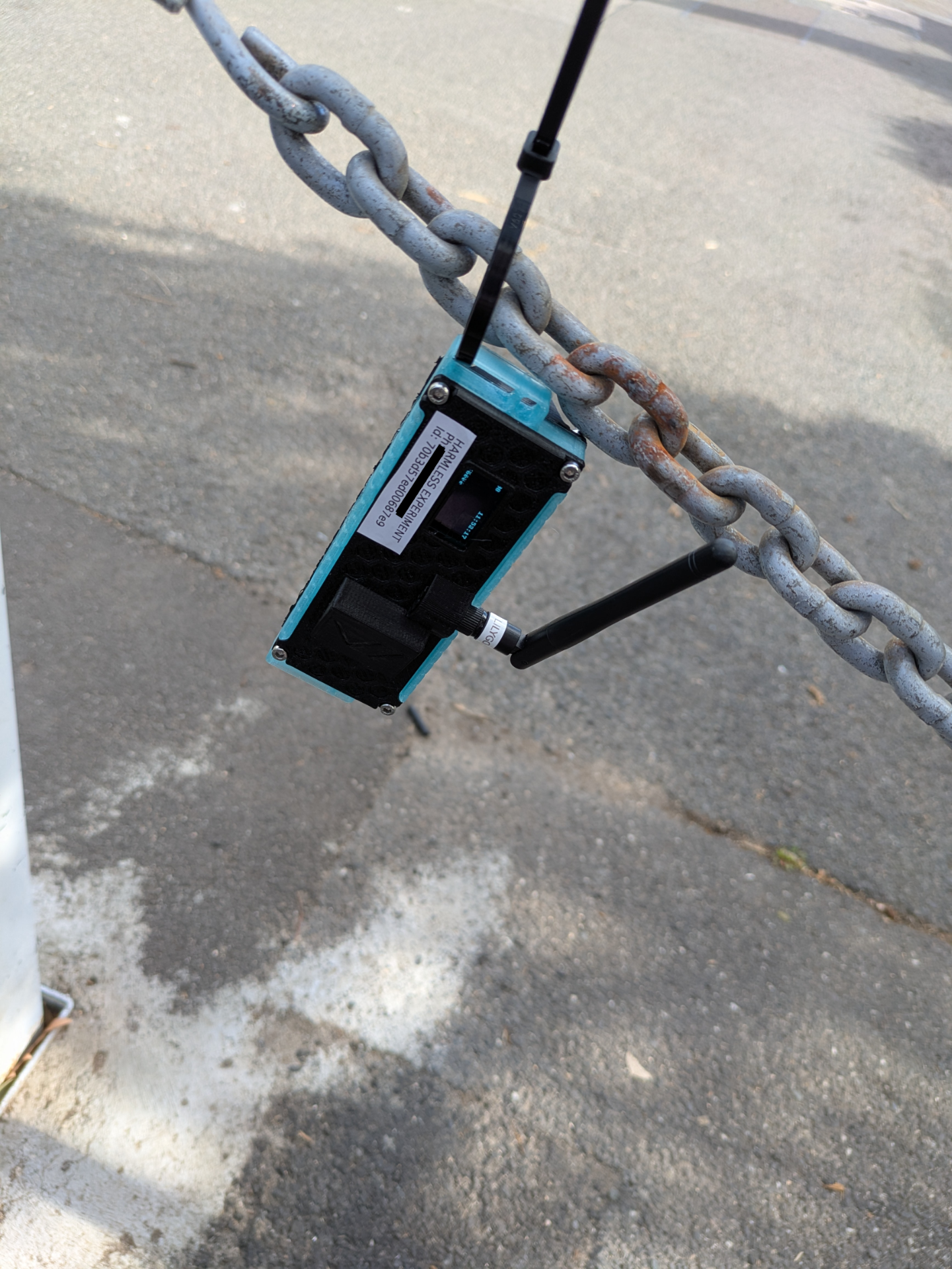
I wasn’t sure if I wanted to hide these or make them look like they belong there.
In terms of communication I’ve been using the “The Things Network”. Likely Helium network would provide more coverage but fuck crypto. As a user crosses through the gate it records the time (this is why GPS was handy) and MAC address. After a waiting period it’ll transmit the seen bluetooth mac address and the time of the strongest signal. The Things Network receives this and triggers a web hook for my API.
Fun little side note here. My backend API doesn’t have any real code. There’s no Lambda function or container running. It’s just API gateway mapping the request into a DynamoDB request.
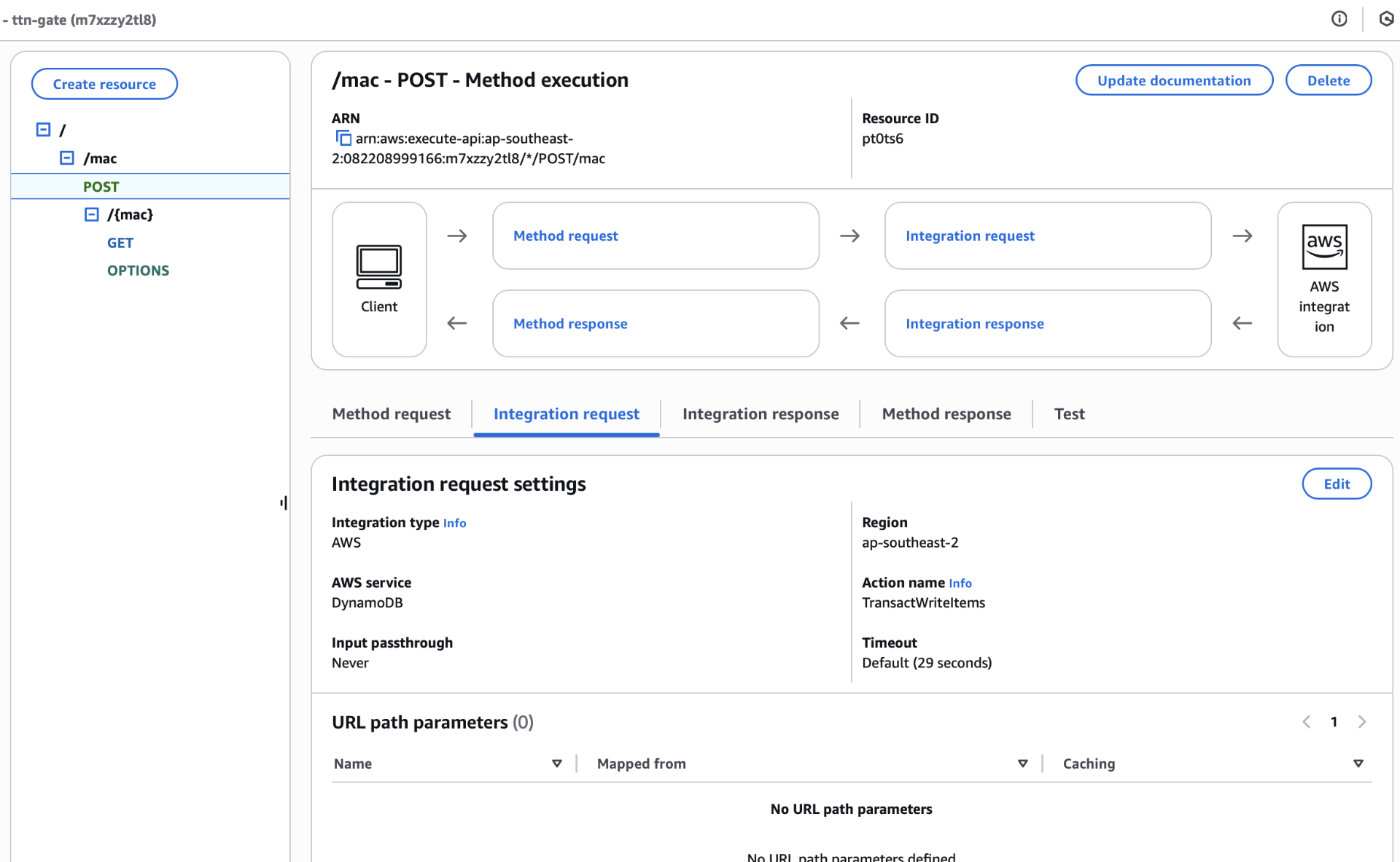
Before we get too far I wanted to talk about privacy. This system doesn’t really have an opt-in function - apart from turning bluetooth on or off on your smart watch. Any Garmin MAC address detected will get forwarded over the The Things Network and to my backend. The Things Network is encrypted so other people sniffing around won’t be able to see that data. I’ve had a think about how this might be able to be improved and the best I can do is a sort of registration process, where a user might sign up and register their MAC address with the service ahead of time. Possibly even require them to register at a specific gate. Because this is just a fun little project with friends I haven’t implemented any of that, but I thought it would be worth mentioning if anyone wanted to build this into a bigger system.
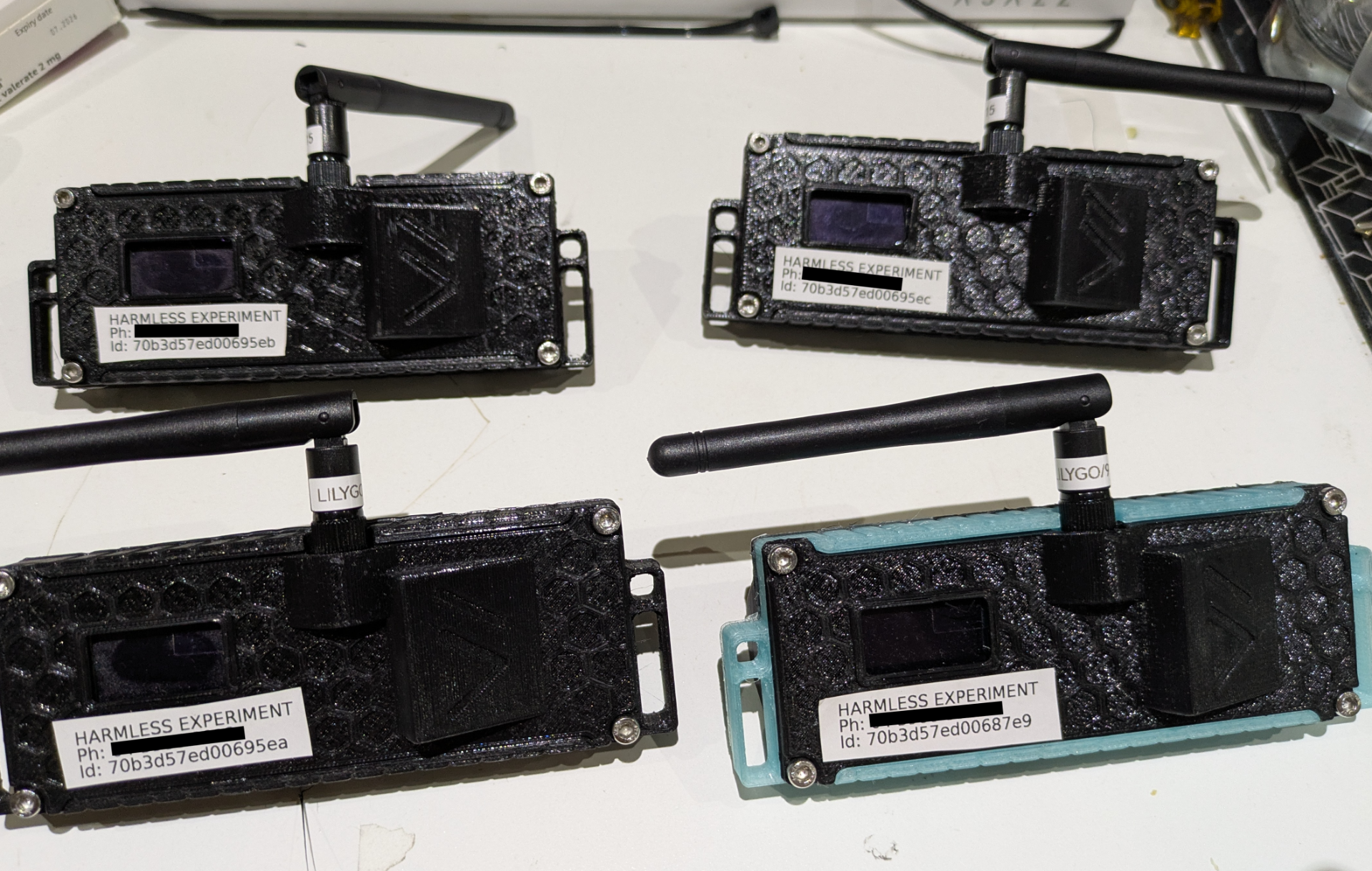
So I built four of these little gates. I think four is sort of the minium you can get away with for this system. You probably need one for the start and unless your start is also the finish you need 1 for the finish. Then you need one fairly close to the start so you have an initial pace estimate (I always wondered why there was a gate really close to the start at Run Melbourne). Which leaves one more for a half way point.
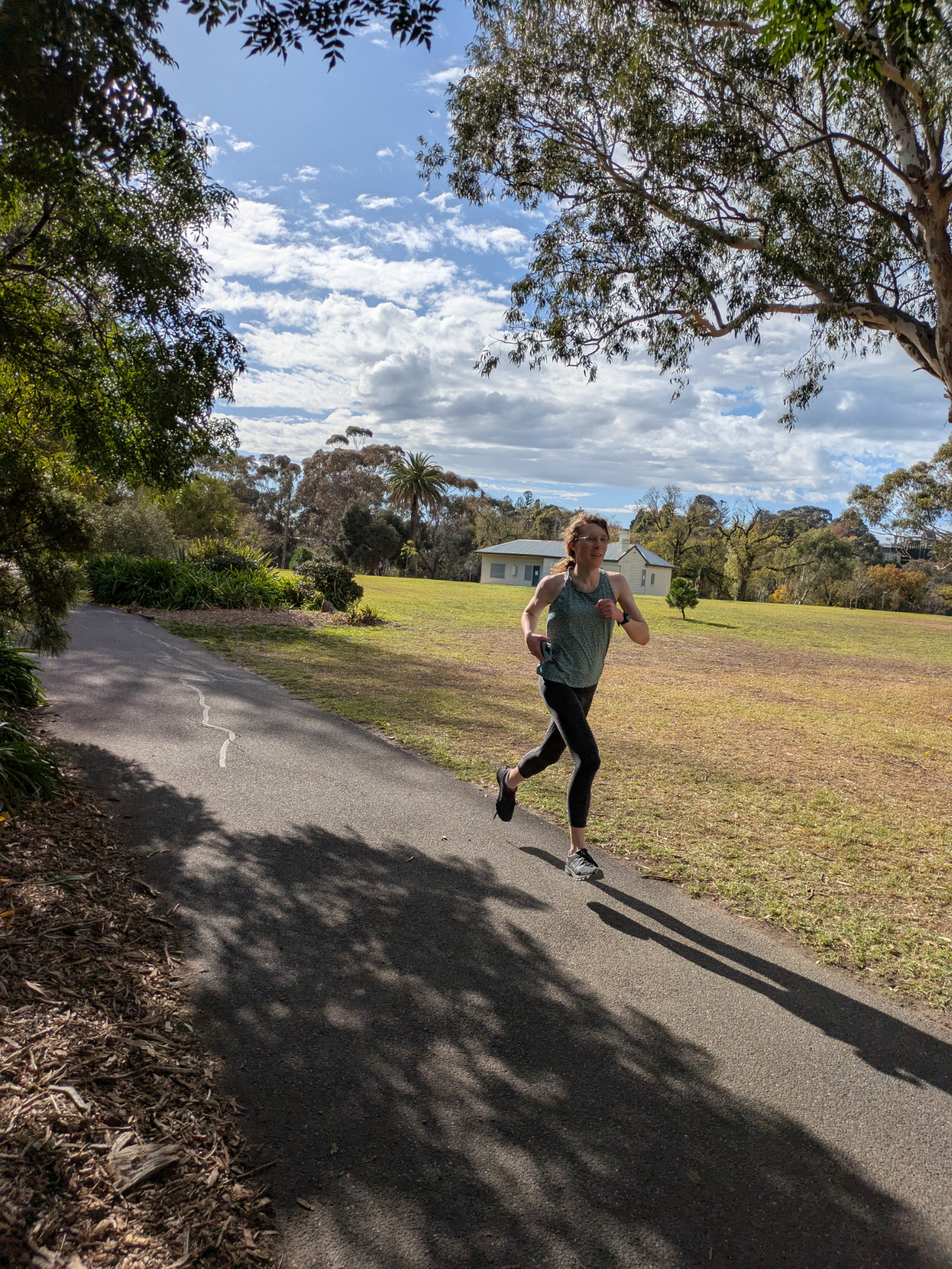
I haven’t had much luck with actually doing practical tests with these, but on the weekend I got the opportunity to. Alex donated her time to help me, and I even did two laps of the test course myself.
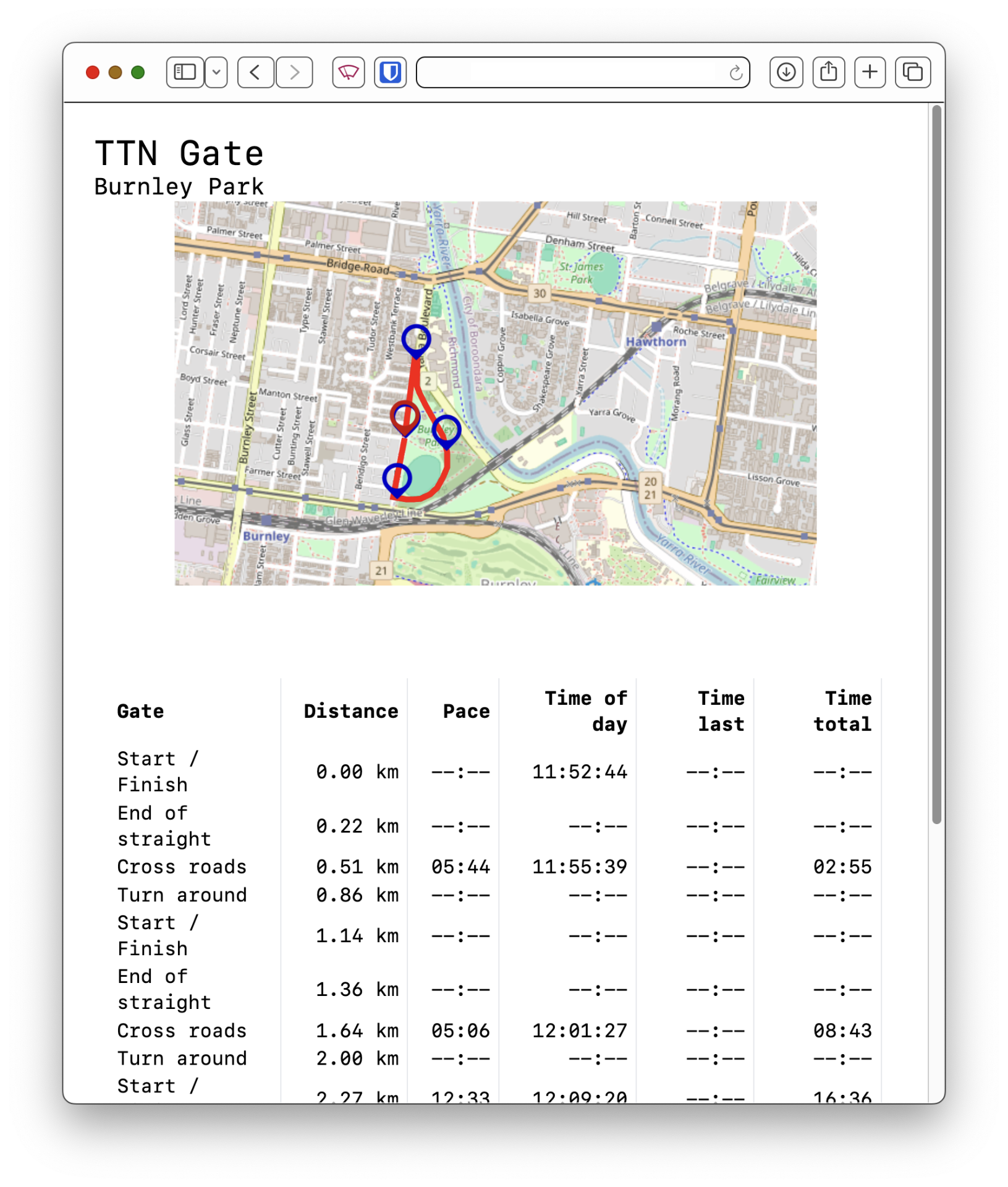
So this is what the website looks like after the run. While running the red marker will indicate estimated runner position and lap times are updated once received. The route is programmed in via a small JSON config file like so:
{
"name": "Burnley Park",
"gates":{
"eui-70b3d57ed00687e9": {
"name": "Start / Finish",
"lat":-37.82511038348801,
"lng": 145.01353745417688
},
....
},
"route": {
"path": [
{"gate": "eui-70b3d57ed00687e9", "distance": 0},
{"gate": "eui-70b3d57ed00695ea", "distance": 220},
....
{"gate": "eui-70b3d57ed00687e9", "distance": 273}
]
}
}
And a GeoJSON file is used to provide the route for the map.
As you can see the screenshot, a number of gates were missed. One of the gates had a failed battery when we went to do the test so we had to only use 3 gates. One of the gates position didn’t have any The Things Network coverage, so never reported crossings. And just to make things worse, someone parked a car right where the start/finish gate was located. This stress tested the algorithm used for lining up the gate crossings with the route - something that has taken a lot of thinking. Handling missing gate crossings can be a bit tricky to get right.
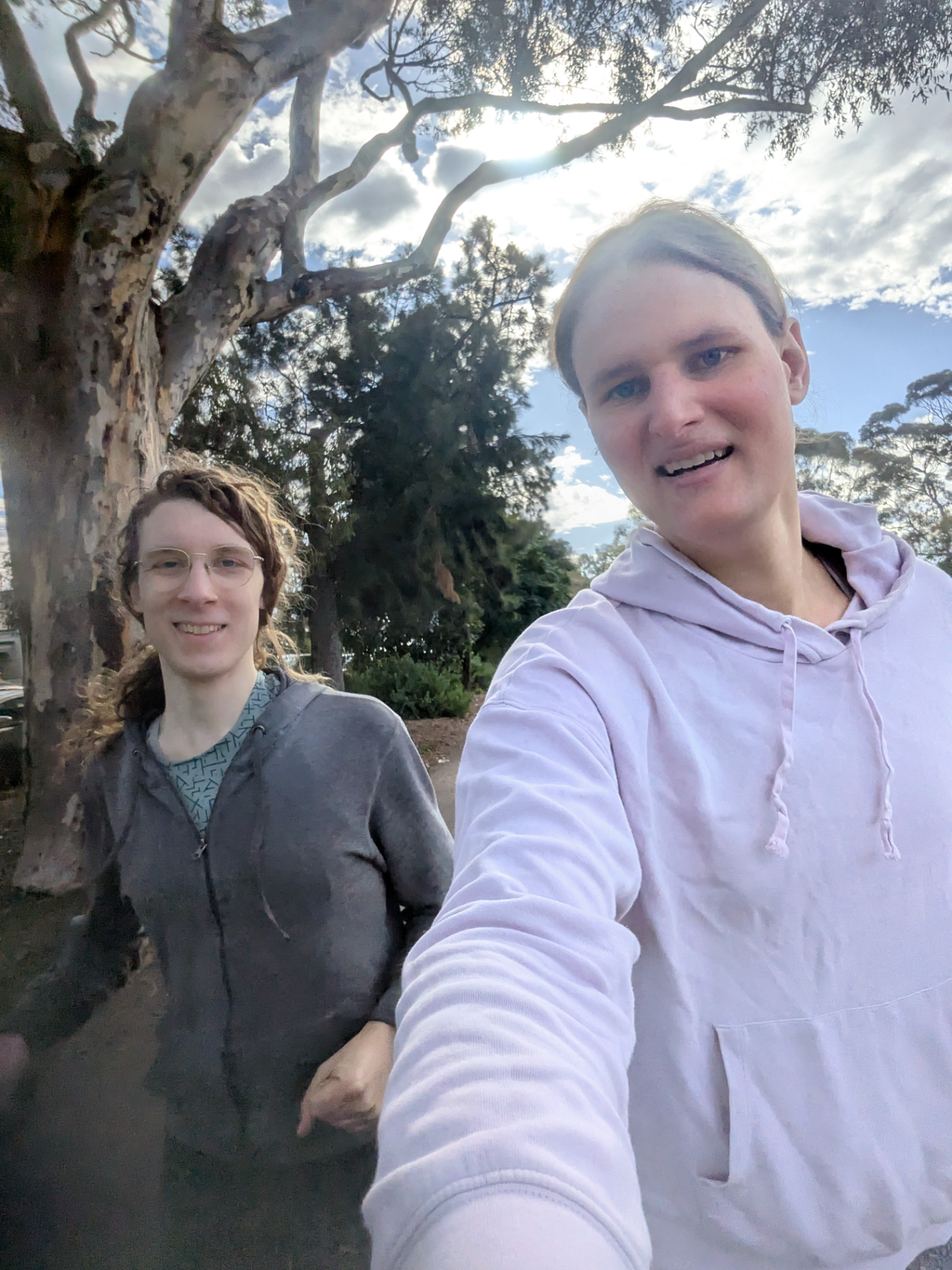
Even though not many data points were recorded in this test it was still a good outcome showing that the system can work. The coverage issue is somewhat known. I was running a gateway recently but didn’t like the overall setup so I’m in the process of rebuilding it which should improve that specific test track. Looking forward to trying this on a much longer track when I’m up for long runs again.